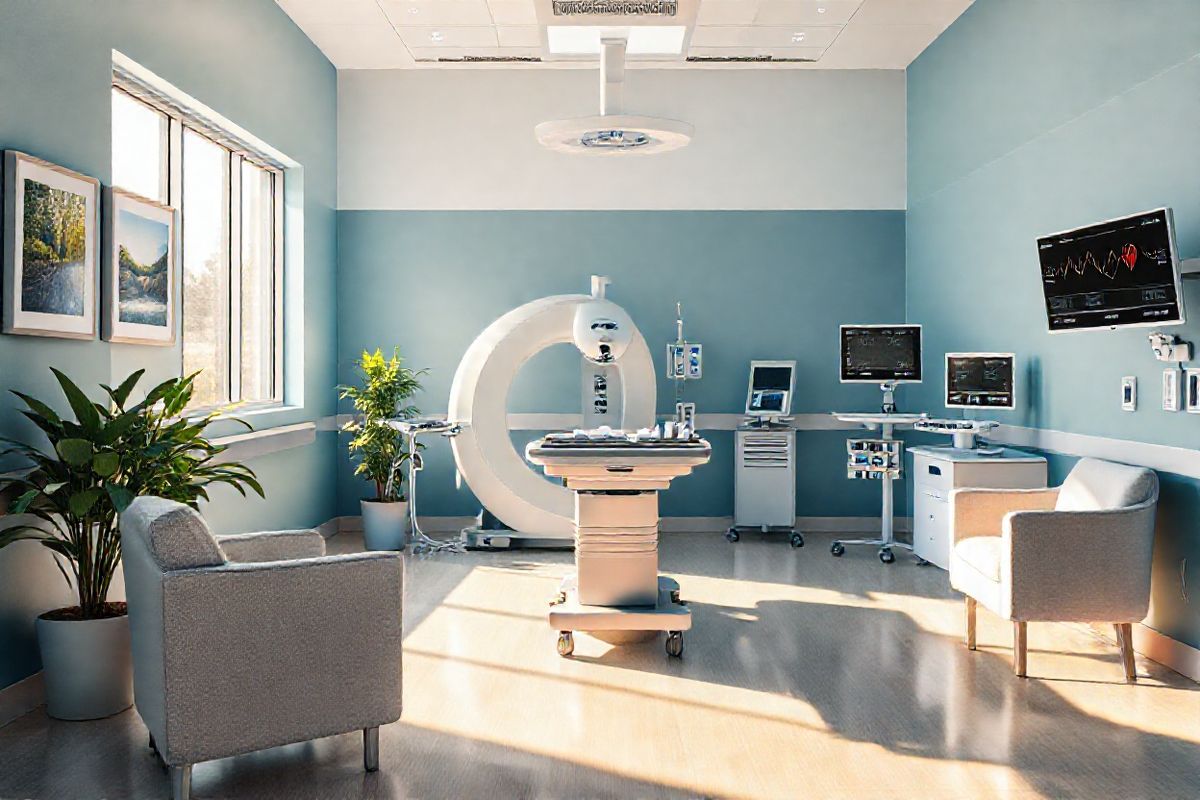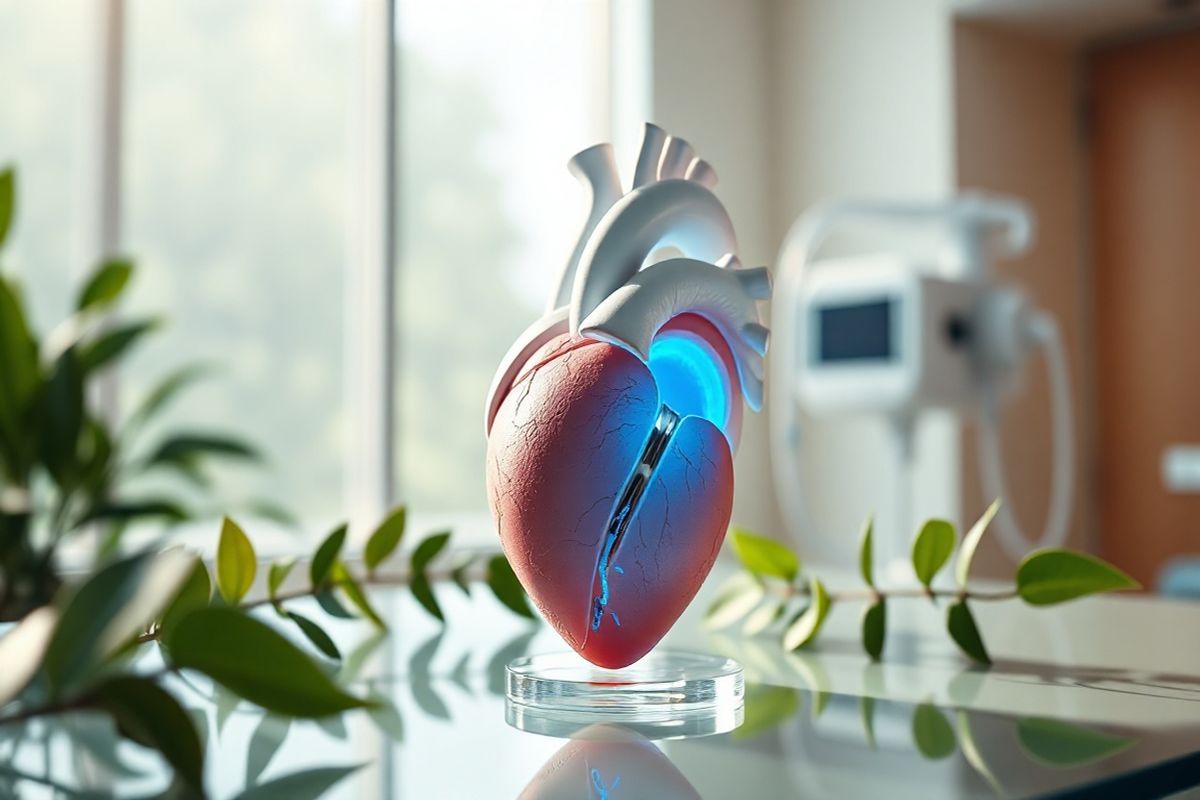Table of Contents
Understanding Left Atrial Appendage Occlusion: What You Need to Know

Left atrial Appendage Occlusion (LAAO) is an innovative procedure aimed at reducing the risk of stroke in patients with atrial fibrillation (AF). The left atrial appendage (LAA) is a small pouch located in the left atrium of the heart. In patients with AF, blood can pool in this appendage, leading to the formation of clots that can dislodge and cause strokes. LAAO is designed to close off this appendage to prevent such events. This procedure has gained traction as a viable alternative to anticoagulation therapy, especially for patients who have a high risk of bleeding or are unable to take blood thinners.
The LAAO procedure has evolved significantly over the past decade. Originally performed through surgical means, the technique has shifted towards minimally invasive methods, which have been shown to yield favorable outcomes with reduced recovery times. Various devices have been developed to facilitate this procedure, enhancing its safety and efficacy.
The Importance of LAAO in Stroke Prevention: A Comprehensive Overview

Stroke is a major concern for patients with AF, with studies indicating that these patients face a five-fold increase in stroke risk compared to those without AF. According to the American Heart Association, approximately 15-20% of all ischemic strokes are attributed to AF-related thromboembolic events originating from the LAA (Cleveland Clinic, n.d.). As a result, LAAO has become an essential strategy in stroke prevention.
Clinical data have shown that LAAO can significantly reduce the incidence of stroke, with studies reporting a stroke risk reduction of up to 90% following successful occlusion of the LAA (Cleveland Clinic, n.d.). Additionally, LAAO may improve overall patient outcomes by decreasing the need for long-term anticoagulation therapy, which is associated with various complications, including gastrointestinal bleeding and intracranial hemorrhage.
TablStroke Risk in Atrial Fibrillation Patients
| Patient Group | Stroke Risk (%) |
|---|---|
| Atrial Fibrillation | 15-20 |
| LAAO Post-Procedure | 1-2 |
The LAAO Procedure: Step-by-Step Breakdown of the Technique
The LAAO procedure typically follows these steps:
-
Preparation: Before the procedure, patients undergo thorough evaluations, including echocardiograms and CT scans, to assess the anatomy of the heart and the LAA.
-
Anesthesia: The procedure can be performed under general anesthesia or conscious sedation, depending on the patient’s health and the physician’s preference.
-
Access: A catheter is introduced through a small incision in the groin (femoral vein) and guided to the heart using imaging techniques such as fluoroscopy.
-
Device Deployment: Once in position, the device (e.g., Watchman, Amplatzer) is deployed to occlude the LAA. This step is crucial as it ensures that blood cannot flow into the appendage, thereby reducing the risk of clot formation.
-
Confirmation: Imaging studies are performed to confirm that the device is correctly placed and that there are no leaks around the device.
-
Closure: The catheter is removed, and the small incision is closed. Patients are typically monitored for several hours to ensure stability before discharge.
Exploring the Latest Devices for LAAO: Innovations in cardiac Care
Recent advancements in technology have led to the development of several innovative devices for LAAO. These devices are designed to provide effective closure while minimizing procedural risks. The following are some of the leading devices in the market:
-
Watchman Device: This is the most widely used device for LAAO. It consists of a small, self-expanding frame made of a flexible material that is deployed within the LAA to create a permanent barrier against blood flow.
-
Amplatzer cardiac Plug: This device is designed for patients with a larger LAA. Its unique design allows for a more secure fit, reducing the risk of complications associated with device migration.
-
Lariat Suture Delivery System: This device employs a different approach by using a suture to ligate the LAA. It is particularly useful for patients who may not be suitable candidates for other devices due to anatomical variations.
TablComparison of LAAO Devices
| Device Name | Design Type | Indications |
|---|---|---|
| Watchman | Self-expanding frame | Standard LAAO procedures |
| Amplatzer Cardiac Plug | Flexible mesh plug | Larger LAA anatomy |
| Lariat Suture Delivery System | Ligation method | Anatomical variations |
Post-Procedure Care and Considerations for Patients Undergoing LAAO
Post-procedure care is crucial for ensuring optimal recovery and preventing complications. Following LAAO, patients are typically advised to:
-
Monitor for Symptoms: Patients should be vigilant for any symptoms of complications such as chest pain, shortness of breath, or signs of infection at the incision site.
-
Medication Management: Most patients will require a short course of anticoagulants to prevent thrombus formation until the device is fully endothelialized (approximately 45 days).
-
Follow-Up Appointments: Regular follow-up with the healthcare provider is necessary to assess the device’s position and the patient’s overall cardiovascular health.
-
Lifestyle Modifications: Patients are encouraged to adopt a heart-healthy lifestyle, which includes a balanced diet, regular exercise, and cessation of smoking.
TablPost-Procedure Recommendations
| Recommendation | Details |
|---|---|
| Monitor Symptoms | Chest pain, shortness of breath |
| Medication | Short-term anticoagulants |
| Follow-Up | Regular check-ups with healthcare provider |
| Lifestyle Modifications | Heart-healthy diet and regular exercise |
FAQ Section
What is Left Atrial Appendage Occlusion?
LAAO is a procedure designed to close off the left atrial appendage to prevent blood clots from forming and causing strokes in patients with atrial fibrillation.
How is the LAAO procedure performed?
The procedure is usually performed using a catheter inserted through the femoral vein, guided to the heart, where a device is deployed to occlude the LAA.
What are the benefits of LAAO over anticoagulation therapy?
LAAO significantly reduces the risk of stroke and eliminates the need for long-term anticoagulation therapy, which can pose risks of bleeding complications.
Are there risks associated with the LAAO procedure?
As with any medical procedure, there are risks, including bleeding, infection, and complications related to the placement of the device. However, these risks are generally low.
How long is the recovery time after LAAO?
Most patients can return home within a few hours after the procedure, although full recovery may take a few weeks, during which follow-up care is important.
References
- Cleveland Clinic. (n.d.). Chiari Syndrome: What It Is, Symptoms, Causes & Treatment. https://my.clevelandclinic.org/health/diseases/21097-budd-chiari-syndrome
- Mayo Clinic. (n.d.). Esophageal varices - Symptoms and causes. https://www.mayoclinic.org/diseases-conditions/esophageal-varices/symptoms-causes/syc-20351538
- Cleveland Clinic. (n.d.). Gastrointestinal (GI) Bleeding: Symptoms, Diagnosis, Treatment. https://my.clevelandclinic.org/health/diseases/23391-gastrointestinal-gi-bleeding
- Cleveland Clinic. (n.d.). Gastrointestinal bleeding - Symptoms and causes. https://www.mayoclinic.org/diseases-conditions/gastrointestinal-bleeding/symptoms-causes/syc-20372729
- Cleveland Clinic. (n.d.). Anesthesia and General Surgery Risks. https://www.bcm.edu/healthcare/specialties/aesthetics/for-patients/anesthesia-and-general-surgery-risks










